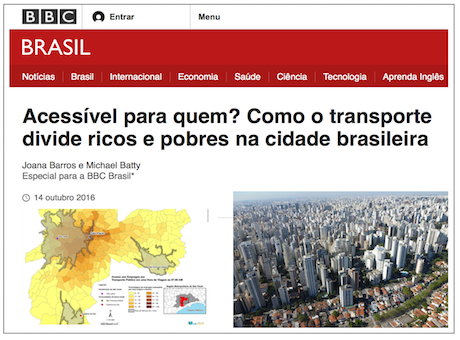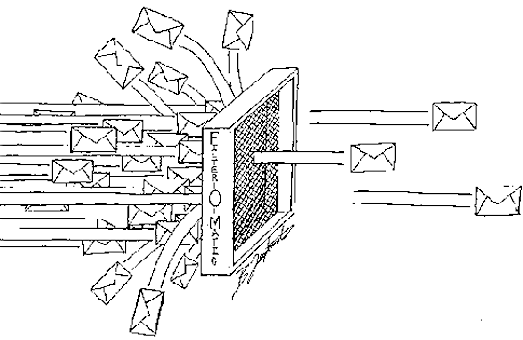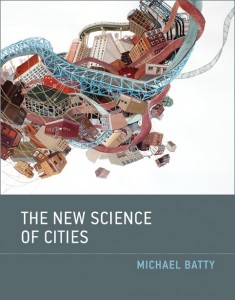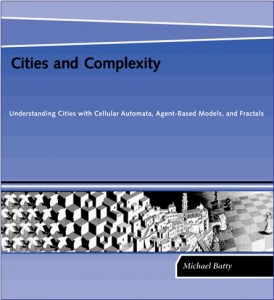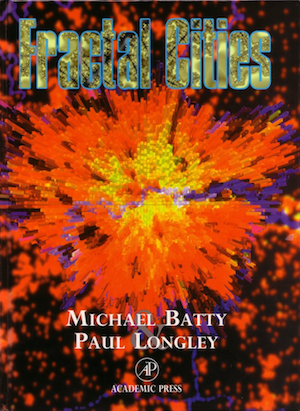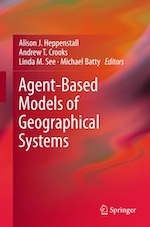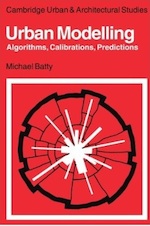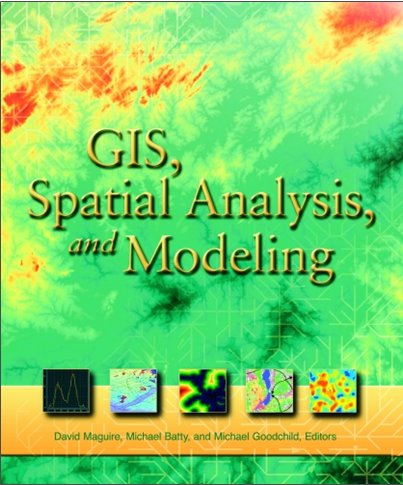Joana Barros and Mike Batty write about their work on the BBC Brasil Web Site. Read their article here which is about how transport segregates people rather than linking them together in cities in Latin America such as Sao Paulo. This is from their ESRC Resolution Project with Chen Zhong and Duncan Smith where they are comparing Sao Paulo with London and working with the group at the University of Sao Paulo and INPE.
Sao Paulo, Brasil: Acessível para quem?
Big Data and the City
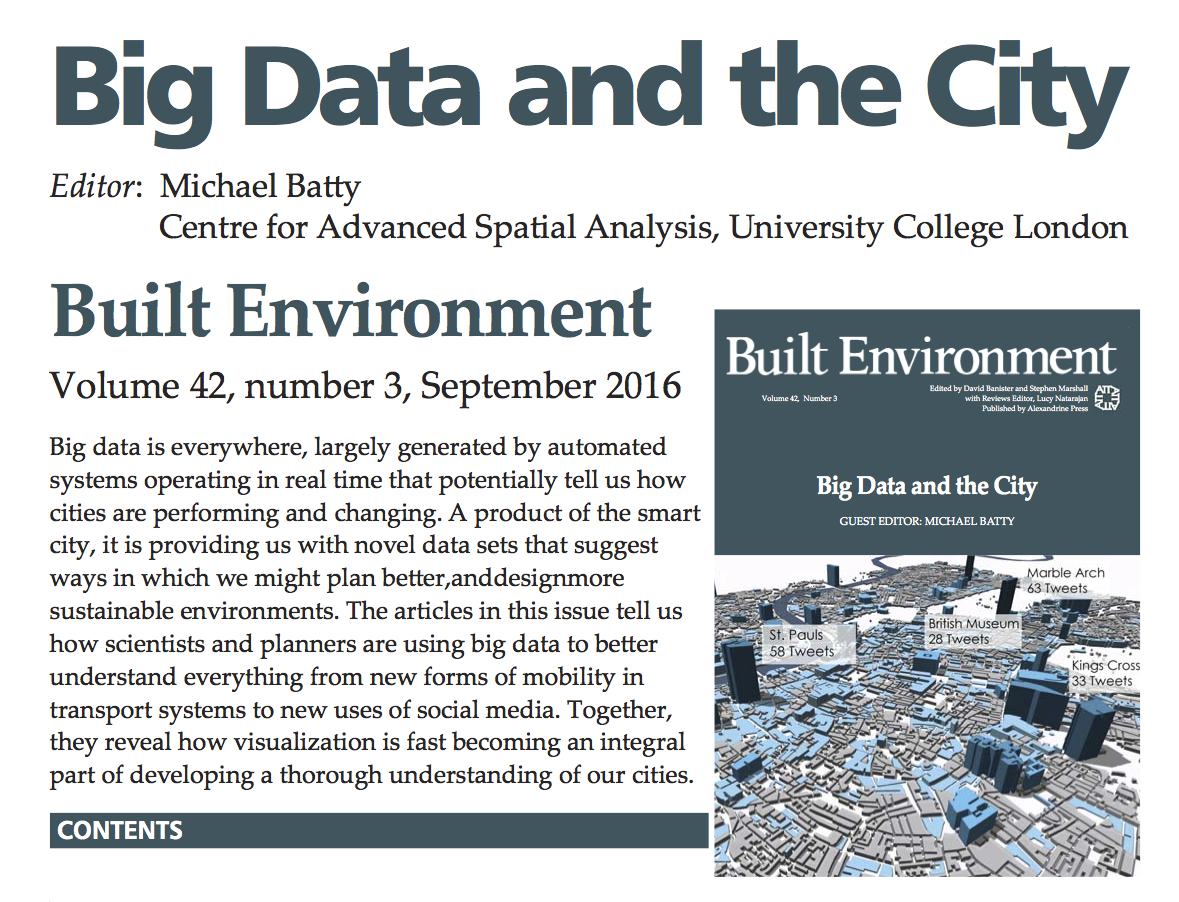 Look at the current issue of Built Environment. Papers from CASA and CASA alumni here as well as several others.
Look at the current issue of Built Environment. Papers from CASA and CASA alumni here as well as several others.
“Big data is everywhere, largely generated by automated systems operating in real time that potentially tell us how cities are performing and changing. A product of the smart city, it is providing us with novel data sets that suggest ways in which we might plan better, and design more sustainable environments. The articles in this issue tell us how scientists and planners are using big data to better understand everything from new forms of mobility in transport systems to new uses of social media. Together, they reveal how visualization is fast becoming an integral part of developing a thorough understanding of our cities.”
Here are the list of papers
Editorial: Big Data, Cities and Herodotus
Batty, Michael
Big Data and the City
Batty, Michael
From Origins to Destinations: The Past, Present and Future of Visualizing Flow Maps
Claudel, Matthew; Nagel, Till; Ratti, Carlo
Towards a Better Understanding of Cities Using Mobility Data
Lenormand, Maxime; Ramasco, José J.
Finding Pearls in London’s Oysters
Reades, Jonathan; Zhong, Chen; Manley, ED; Milton, Richard; Batty, Michael
A Classification of Multidimensional Open Data for Urban Morphology
Alexiou, Alexandros; Singleton, Alex; Longley, Paul A.
User-Generated Big Data and Urban Morphology
Crooks, A.T.; Croitoru, A.; Jenkins, A.; Mahabir, R.; Agouris, P.; Stefanidis, A.
Sensing Spatiotemporal Patterns in Urban Areas: Analytics and Visualizations Using the Integrated Multimedia City Data Platform
(vonu) Thakuriah, Piyushimita; Sila-Nowicka, Katarzyna; Paule, Jorge Gonzalez
Playful Cities: Crowdsourcing Urban Happiness with Web Games
Quercia, Daniele
Big Data for Healthy Cities: Using Location-Aware Technologies, Open Data and 3D Urban Models to Design Healthier Built Environments
Miller, Harvey J.; Tolle, Kristin
Improving the Veracity of Open and Real-Time Urban Data
Mcardle, Gavin; Kitchin, Rob
Wise Cities: ‘Old’ Big Data and ‘Slow’ Real Time
Carrera, Fabio
Collecting and Visualizing Real-Time Urban Data through City Dashboards
Gray, Steven; O’Brien, Oliver; Hügel, Stephan
Theoretical Filters
Science celebrates the goal of parsimony. Occam’s razor and all that. Indeed I wrote an editorial about this a few years ago in 2010 (click here). The idea rests on assumptions that our best theories are those that strip away that which is superfluous to our purpose and generates ideas that are as “… simple as possible but not too simple” as Einstein reportedly said. The trouble with cities and their planning is that we have a surfeit of theories and many seem plausible. One way of proceeding is to define their essence and in this editorial, I focus on how we might do this in many different ways. One way is to take out of any theory that which is obvious, that which is geometrically or physically determined prior to the events involved and James S. Coleman in 1964 called this The Method of Residues in his seminal text Introduction to Mathematical Sociology (New York: Free Press of Glencoe). In essence, he suggested that it is in the ‘residues’ – the residuals – where we will find enlightenment and only when the obvious has been removed will we be in a position to explore the non-obvious. One way of progressing theory is to produce synthetic data, to look at idealised situations, and search for enlightenment in these. Virtual realities help in this but so do speculations about future cities. There are many suggestions and in this editorial, we suggest how these theoretical filters can enable us to get the best out of theory and to test what is best theory. Read on. You can also retrieve the editorial by clicking on the above image.

